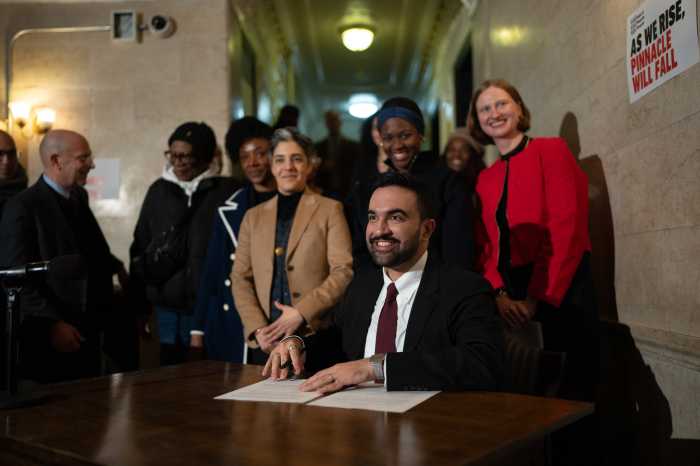Damned if we do, damned if we don’t.
Apple’s refusal to comply with a court order and design new technology to hack the iPhone of one of the California terrorists is as much a battle between privacy, national security, and progress — without a happy ending.
It would be great if the FBI could use decryption codes to unlock the terror phone — and sniff out and stop other jihadists from attacking us. But what if the software fell into the wrong hands or was upgraded to infiltrate businesses protecting corporate secrets, governments securing classified information, and John and Jane Doe safeguarding personal information, as Apple’s boss warned?
One scoundrel is all it takes: Pakistani scientist Abdul Qadeer Khan confessed to passing confidential nuke-building knowledge to North Korea, Libya, and Iran, his lone-wolf action positioning the entire free world on a collision course with its sworn enemies for eternity.
The government’s lawsuit wouldn’t exist — and 14 innocent people would still be alive — if immigration officials had thoroughly employed the technology at their disposal to investigate the terror couple’s Islamo-ties to Pakistan and Saudi Arabia, before letting them breeze through the fiancee-visa screening and waltz into the country to commit the worst terrorist attack since 9-11.
And Apple wouldn’t have any problem right now if leaders in San Bernardino had installed software they owned on the government-issued iPhone the terrorist left behind that would have given free access to higher-ups.
We advance at our own gain and peril, and when University of California lab workers in the late 1960s watched test information pass between two computers through a 15-foot cable, little did they know the miracle moment would zoom us into the kingdom of science fiction — allowing us to video-chat with people across the world, store the Declaration of Independence on a chip the size of a blood cell, and perform surgery using robots — but also take us to the edge of a tech-fault line bubbling with the lava of human error.
It is only a matter of time before scientists harness human brainwaves to unleash the power of telekinesis, and mind-controlled software rolls around. Then Apple’s lawsuit will seem like the good old days.
Follow me on Twitter @BritShavana
























